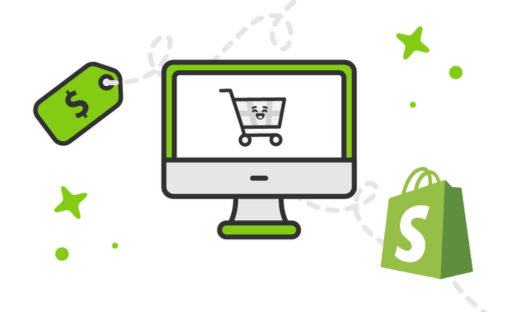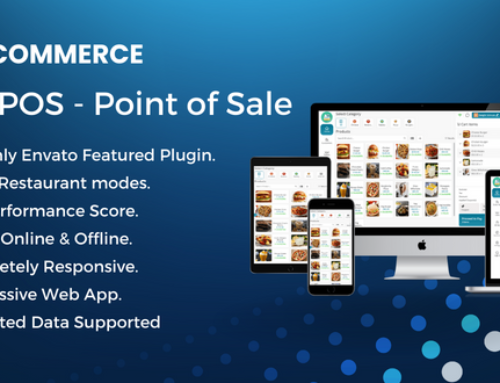INTRODUCTION: DIGITAL PRODUCTS SOCIAL MARKETPLACE
This social marketplace for digital goods with many vendors is a feature-rich platform created for people and companies to sell their digital goods online. It provides a comprehensive and scalable solution for developing online storefronts inside a vibrant marketplace, powered by PHP Laravel, MySQL, and Bootstrap4.
A wide range of products, including themes, scripts, plugins, images, mobile apps, and more, can be displayed by sellers, who can also activate or cancel subscriptions. This script delivers an experience that is both comprehensive and simple to use. It features user roles, flash offers, a blog, different payment gateways, social login and sharing, support for multiple languages, guest checkout, and multilingual support. The installation procedure is simple and quick, and users can get help from extensive documentation.
This social marketplace for multi-vendor digital items was created with an emphasis on accessibility and functionality, making it simple for sellers to set up their online businesses and appeal to a wider audience. The different requirements of sellers are accommodated by the script’s extensive capabilities, which include functionality for importing and exporting data, generation of PDF invoices, referral earnings, and earnings based on commission. Customers are able to confidently browse and purchase items because the interface is simple to use and there is a large variety of digital products that can be offered. This market offers a trustworthy and effective alternative for both buyers and sellers wishing to promote their digital creations or find high-quality digital products.
User Features
Selling digital goods:
This market gives vendors a location to effortlessly sell their digital goods—including software, eBooks, graphics, and more—online.
Multiple Vendor Support:
Multiple vendors are supported by the script, enabling various merchants to set up their own shops and control their product listings.
Multi-Language:
A varied user base can be served through the marketplace’s multilingual design, which also increases the reach of businesses.
Completely Responsive Design:
Due to the marketplace’s full responsiveness, browsing and making purchases are seamless across all devices and screen sizes.
9.52.7 Laravel:
The prominent PHP framework Laravel, known for its dependability and scalability, was used to create the script as of version 9.52.7.
Bootstrap:
The marketplace makes use of the Bootstrap framework, which offers a slick and contemporary look and guarantees interoperability across many browsers and devices.
Icons from Font Awesome:
The market now has Font Awesome icons, which provide a huge selection of premium, editable icons for improved visual appeal.
Simple Installation:
The script provides a simple and easy installation process, enabling customers to quickly set up their marketplace.
Construct Your Own Store:
The marketplace allows sellers to create and customize their own stores, showing their distinctive branding and goods.
Featured Items:
The marketplace showcases selected items, providing vendors the chance to highlight particular goods and boost their exposure.
Items on flash sales:
Items from flash sales are prominently displayed, which fosters a sense of urgency and boosts sales with limited-time deals.
Free Items:
Freebies can be provided by sellers to draw in new clients and increase brand recognition.
Popular Products:
By highlighting popular products based on user interaction and sales, the marketplace aids consumers in finding hot and well-liked goods.
Newest Products:
The marketplace’s most recent entries are highlighted, allowing customers to browse and buy new and modern digital goods.
Related Products:
Customers are given recommendations for related products, improving cross-selling potential and offering a tailored browsing experience.
Ajax Autocomplete:
The script has an Ajax autocomplete feature that allows users to quickly and easily find goods by typing in search queries.
Filters for price, category, text, and display order:
The browsing experience can be improved by providing customers with the ability to filter and sort products according to price, category, keywords, and display order.
Pagination:
Pagination is used for blog posts, products, comments on products, and reviews on products, which enhances navigation and organization.
Blog:
A blog function on the marketplace enables vendors to communicate informational updates, news, tutorials, and other material to their clients.
Cookie Popup:
The display of a cookie popup notice ensures adherence to data privacy laws and improves user transparency.
Comment on the blog and the products:
To promote a sense of community, users can submit comments and participate in debates about blog entries and merchandise.
Product Items License Support System:
For product items, the market offers a license support system, ensuring the correct use and intellectual property protection.
Dynamic Pages:
Because the script allows dynamic pages, merchants are able to design and maintain sites with content in addition to the typical product lists.
Page Menus:
Pages can be added to the main and footer menus, giving you simple access to crucial information such as terms & conditions or FAQs.
Contact Us Page:
A special “contact us” page is provided, giving buyers and sellers an easy method to connect and address any questions or issues.
Register, Login, Forgot:
The marketplace offers user authentication features that let consumers create accounts, log in, and, if necessary, reset their passwords.
Email Confirmation for Registration: ON/OFF:
The script gives you the option to turn on or off confirmation mail for user registrations, which adds an additional layer of security and proof.
ON/OFF Manual Payment Confirmation:
The marketplace provides administrators with the ability to manually confirm payments made by users, providing them control over the process of verifying payments made by users.
File storage with Amazon S3:
The script enables vendors to safely store and manage their digital files by integrating with Amazon S3, a cloud storage provider.
ON/OFF: URL Slug Rewriting:
The marketplace offers URL slug rewriting functionality, improving SEO by generating descriptive and user-friendly URLs for product pages.
I frame Preview:
The iframe preview function allows vendors to demonstrate their digital goods, including interactive information or linked movies, giving potential customers a sneak peek.
Audio and video preview:
The marketplace allows merchants to offer multimedia content that highlights the features and caliber of their digital goods by supporting video and audio previews.
Social Links, Social Share, and Social Login:
Through social networking platforms, users can simply share product listings, and the social login feature enables simple registration and login with social media accounts. Access to the social media profiles of the marketplace is made simple by social connections.
Shop Page:
Buyers can browse and buy products from particular vendors in one convenient spot thanks to each seller’s own store page, which is where their products are presented.
Create a PDF invoice:
The script makes PDF invoices for sales, so both buyers and sellers can keep track of what they’ve bought and sold. This makes accounting much easier.
Subscription:
As a result of the marketplace’s subscription-based services, both buyers and sellers have access to special features and advantages depending on their subscription status.
Free Subscription:
The free subscription plan option is available to sellers and buyers, giving them restricted access to particular features or goods inside the marketplace.
Downloads from subscribers:
The option to download digital goods from the market gives subscribers access to exclusive premium content.
Direct Payment to Vendors:
The marketplace makes it easy for buyers and sellers to pay each other directly. This speeds up the exchange process and makes sure sellers get paid quickly.
Cart:
For a quick and easy checkout and a seamless shopping experience, customers can add numerous goods to their cart.
Checkout:
The marketplace provides a quick and simple checkout process that enables customers to finish their transactions quickly and safely.
My Purchases:
Users get access to a specific area where they can manage their purchase history, monitor their recent purchases, and check on the progress of their digital products’ deliveries.
My Profile:
Each user has a personalized profile page where they can control their account information, change their preferences, and see what they’ve been doing in the marketplace.
Favorite Things:
Customers can add their preferred goods to a special “Favorites” list for easy access and future use.
Watermark:
The script allows for the watermarking of digital goods, creating a distinctive watermark to preserve ownership and copyright.
Live chat on Tawk:
Buyers, vendors, and administrators can communicate in real-time thanks to the marketplace’s integration with the live chat platform Tawk.
Guest Checkout:
The marketplace provides a guest checkout option, enabling customers to make purchases without establishing an account, thereby streamlining the purchasing procedure.
System for Refund Requests:
The script features a feature that allows customers to ask for refunds on their purchases, offering a way to handle problems and guarantee client happiness.
Cash Deposit System:
The marketplace offers a cash deposit mechanism that enables customers to add money to their account balance in preparation for future transactions or subscription payments.
Dynamically Add/Edit/Delete Item Type:
Sellers have the freedom to add, change, and remove item types on the fly. This makes sure that the marketplace can handle a wide variety of digital product categories and versions.
Attributes that are dynamically added, edited, or deleted:
The ability for sellers to dynamically add, update, and delete attributes for their products enables personalization and improves product classification.
Exclusive vs. Non-Exclusive Commission System:
Sellers on the marketplace can select between an exclusive or non-exclusive compensation system, depending on what works best for their product.
Currency Conversion Using Open Exchange Rates:
As a result of the script’s integration with Open Exchange Rates, correct and current currency conversion rates are provided, enabling smooth transactions and pricing across several currencies.
Drag and Drop Product File Upload:
The marketplace’s interface allows sellers to quickly and effortlessly drag and drop their digital product files, expediting the product upload procedure.
Value-added tax (VAT) based on country:
By enabling country-specific VAT computations, the market facilitates precise taxation and compliance for digital goods offered in several locations.
Referral system:
The script has a referral system that lets users make rewards or commissions by sending new customers to the marketplace. This encourages user engagement and growth.
Sitemap XML Feed:
The marketplace creates an XML sitemap feed that enables effective content crawling and indexing by search engines, enhancing exposure and search engine rankings.
License or serial number key:
To ensure secure and managed access to licensed content, the script facilitates the maintenance and distribution of license keys or serial keys for digital products.
Charges API and Stripe Intents API:
The integration of the marketplace with Stripe’s Intents API and Charges API makes it possible for buyers and sellers who use Stripe as a payment gateway to handle payments in a way that is both streamlined and protected.
Top Authors:
The marketplace highlights the best writers or sellers based on how well they do and how many items they sell. This gives successful contributors credit and more exposure.
Coupon Code:
In order to increase sales and client loyalty, vendors can generate and disseminate coupon codes that enable them to provide customers with discounts or promotional incentives.
Slow loading:
The marketplace uses lazy loading techniques to optimize the loading of content and product listings, which leads to quicker page loads and a better user experience.
System for Vendor and Customer Followers and Following:
Users can follow their preferred vendors or customers to receive updates and notifications regarding their new offerings or marketplace activities.
Using Ajax and Emoji, the internal messaging system for buyers and sellers:
The script has an internal message system that makes it easy for buyers and sellers to talk to each other. Ajax technology and support for emojis help with questions, negotiations, and support.
Yes / No Option: Free Item Support Price:
There is flexibility in pricing methods since sellers can decide whether or not to charge for those things they are willing to give away for free.
Customer / Vendor Profile Page:
Each vendor and customer has a profile page where they can highlight their details, products, and marketplace activity, thereby augmenting their exposure and branding.
Item Review and Ratings:
Users have the option to post evaluations and ratings for things they have purchased, promoting trust and enabling informed choice-making by giving merchants and prospective purchasers useful input.
Rating email notification:
Sellers are notified through email when their items acquire new ratings or reviews, enabling them to stay up to date and involved with customer feedback.
Paying Systems:
The marketplace accepts payments through a variety of payment gateways, including PayPal, Stripe, Paystack, Wallet, Localbank, Razorpay, Payumoney, Payhere, 2Checkout, Iyzico, Flutterwave, Coingate, Payfast, Coinpayments, Sslcommerz, Instamojo, aamarPay, and Mollie, offering a variety of options for safe and practical payment processing.
Option for Withdrawal:
The ability to withdraw funds using a variety of solutions, including PayPal, Stripe, Paystack, Localbank, Payfast, Paytm Wallet, UPI, and Skrill, gives sellers the freedom to pick how they want to collect their revenue.
Ajax System Load More:
The marketplace uses an Ajax-based load mechanism to enable the smooth and seamless loading of new content visitors to scroll down the page, such as product listings or blog entries.
Request for customer withdrawal:
Customers have the option of requesting withdrawals of their available funds or earnings, giving them a practical means of gaining access to their accrued amounts.
Blog Type:
The marketplace has a component for categorizing blogs where administrators and vendors can write and edit blog entries based on various subjects or themes, improving the engagement of content and SEO.
Items Category:
Users may simply navigate and find pertinent products within their selected categories thanks to the marketplace’s division of the available digital goods into various item categories.
Request for Refund Pending:
The management and processing of pending refund requests made by consumers can be handled by administrators, who can also guarantee the prompt resolution of any problems relating to refunds.
Withdrawal Pending:
Administrators can keep an eye on and take care of sellers’ pending withdrawal requests to make sure their revenues are processed smoothly and on schedule.
Manage orders:
A seamless shopping experience for clients is ensured by the script’s complete order management capabilities, which enable administrators and sellers to efficiently track, process, and deliver orders.
And More
In order to ensure a solid and complete platform for buying and selling digital goods, improve user experience, and maximize business potential, the marketplace offers extra features and capabilities.
Admin Features
Effective admin panel:
Administrators have complete control and administration over the platform’s settings, features, and content thanks to the marketplace’s robust and feature-rich admin panel.
Dashboard:
The admin panel has a dashboard that gives a visual overview of important metrics and figures, such as the number of orders, the number of vendors, the total earnings from referrals, the total earnings from admin referrals, the total earnings from admin earnings, the number of referrals, the payouts for withdrawals, the number of refund requests, and more.
Administration Sales Report Chart:
Administrators get access to sales information as interactive charts, which gives them the ability to watch and analyze sales performance, spot trends, and make wise business decisions.
Add/Edit/Delete Product Items Admin Manage:
The marketplace’s inventory of goods can be managed and controlled by administrators, who can also add, amend, and delete product listings as necessary
Total earnings from referrals:
Administrators can monitor and control the effectiveness of the referral programme by using the admin interface, which offers data on the overall referral revenue produced by users.
Role management for users:
In accordance with the specified roles, administrators can grant or revoke access to particular features and functionalities.
Enable/Disable Subscription:
Administrators have control over the availability and use of subscription-based functionality by enabling or disabling subscription choices for users.
Enable/Disable reCAPTCHA on Google:
Through the use of the admin interface, administrators have the ability to set or disable Google reCAPTCHA, which adds an extra level of security and protection against spam and other malicious actions.
Features to Enable/Disable Item Fields:
Administrators have the ability to customize and be flexible with the data needed for product listings by enabling or disabling particular item fields.
Widget With Custom CSS & JS:
Administrators can add unique code snippets to the admin panel’s custom CSS and JS widget to alter the marketplace’s look and functionality to their liking.
Log in as a Vendor:
To experience the market from the vendor’s point of view and help with troubleshooting, testing, and support when necessary, administrators can log in as a vendor.
Using Google AdSense:
The market allows for Google AdSense integration, which enables platform managers to monetize the service by presenting pertinent adverts and collecting extra income.
Two Different Header Types:
The marketplace’s branding and visual design are flexible thanks to the administrators’ choice of two header layout options.
Ajax/Normal Shop Filter Types:
The functionality of the store filter may be customized to employ either Ajax or conventional loading techniques, which improves both the user experience and the performance when filtering and exploring products.
Item Type:
The marketplace supports a variety of item kinds for digital goods, enabling vendors to classify and list their goods in accordance with their unique qualities and features.
Attributes:
Sellers have the ability to add, modify, and manage product attributes, giving customers full details and requirements.
Country:
Sellers can say where their goods come from, which lets buyers filter and look for products from their desired country.
Features:
Sellers can draw attention to the qualities and capabilities of their goods, showing their distinctive selling propositions, and luring customers.
System of Deposit:
The marketplace offers a deposit system that enables sellers to add money to their accounts and utilize it for platform fees or subscription purchases.
Start selling:
Sellers can begin selling their products quickly by posting listings, selecting prices, and controlling their inventory directly on the site.
Template for emails:
By managing and personalizing email templates, administrators may ensure consistent and tailored communication with users throughout the purchasing and selling process.
Newsletter:
The marketplace has a newsletter tool that enables administrators to regularly update subscribers on deals, new products, and other information.
Order information:
Sellers and administrators have access to complete order details, including information on the buyer, the goods, previous transactions, and status updates.
Back-up system:
A backup mechanism is included into the marketplace to guarantee data security and integrity. This technology enables administrators to fre
Refund Request:
Refund requests can be started by buyers for valid transactions, and administrators can handle and handle these requests to guarantee client satisfaction.
Reviews and Ratings:
Users can rate and review goods, which helps buyers make better choices and makes sellers more accountable for quality control.
Withdrawal Request:
In order to ensure that payments to sellers are made on time, administrators can supervise and execute requests from sellers for withdrawals of their revenues.
Dynamic Pages:
Dynamic pages in the marketplace can be easily created and managed by administrators, allowing for unique content, rules, and more details.
Contact details:
Buyers may quickly get in touch with sellers for questions or support by using the contact details they supply, such as their social network accounts or email addresses.
Management of blogs:
A marketplace administrator can oversee and publish blog articles, produce interesting content, offer updates, and advertise goods or merchants.
Default Settings:
A wide range of basic settings is available in the marketplace, enabling administrators to set up and alter different features and aesthetics of the platform.
Setting Colors:
Administrators can alter the marketplace’s color scheme and visual layout to fit their branding or personal preferences.
Badges Options:
Badges or labels that emphasize special promotions, top sellers, or featured items within the marketplace can be created by administrators and managed by these individuals as well.
Email Settings:
Email settings, such as SMTP configuration, email notifications, and automatic emails sent in response to certain occurrences, can all be configured and managed by administrators.
Media Options:
The marketplace offers media options to regulate how photos, videos, and other media assets linked to product listings are displayed and managed.
Settings for Currency:
To accommodate customers from various areas and promote worldwide sales, administrators can choose and regulate the currencies that are accepted for transactions inside the marketplace.
Payment Settings:
Administrators have the ability to define and maintain payment settings, such as the types of transaction fees, supported payment gateways, and payment processing choices.
Social Setting:
The marketplace enables social media integration, giving administrators the ability to set up and control social login, sharing, and linking to increase user interaction and reach.
Limitation Settings:
Administrators can impose limits or restrictions on a variety of marketplace features, including the number of products listed, the size of the files, and the degree of subscription.
Preferred Configurations:
Users can change their preferred account settings, such as their preferred language, preferred currency, and notification preferences.
Language Setting:
To accommodate a broad user base, administrators can control language settings and provide support for multiple languages.
And more:
To provide a complete and adaptable platform that satisfies the demands of vendors and consumers, the marketplace provides extra features and options.









